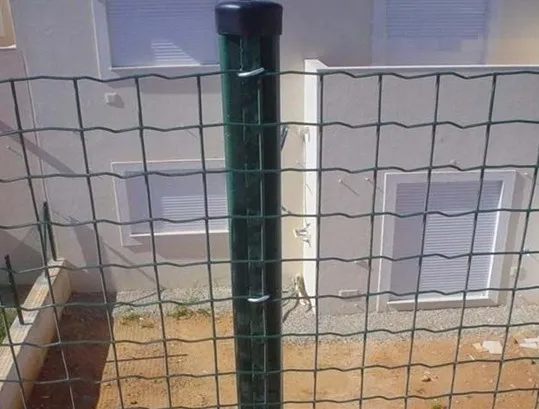nov . 24, 2024 00:15 Back to list
Creating a Durable Chicken Wire and Wooden Fence for Your Backyard Garden
The Chicken Wire Wood Fence A Practical Solution for Backyard Enclosures
In the realm of backyard structures and fencing solutions, the combination of chicken wire and wood creates a versatile and practical option for homeowners. This hybrid fencing has become increasingly popular for various reasons, including security, functionality, and aesthetic appeal. In this article, we will explore the benefits, construction methods, and uses of chicken wire wood fences, highlighting why they are an excellent choice for both urban and rural settings.
The Benefits of a Chicken Wire Wood Fence
1. Affordability One of the primary advantages of constructing a chicken wire wood fence is its cost-effectiveness. Chicken wire, usually made from galvanised steel, is relatively inexpensive compared to other fencing materials. When combined with wooden posts, the overall cost remains low while providing a sturdy barrier.
2. Lightweight and Easy to Work With Chicken wire is lightweight, which makes it easy to handle during installation. This convenience not only speeds up the construction process but also allows homeowners to manage the project without needing extensive help or heavy machinery.
3. Versatile Design Options The aesthetic quality of a wooden fence can be enhanced with chicken wire. Homeowners can choose different styles and finishes for the wood, enabling them to match the fence with their house’s exterior or create a unique garden feature. Additionally, the flexibility of chicken wire allows for creative designs, such as curve shapes or combined fencing styles.
4. Security for Pets and Livestock The primary purpose of a chicken wire wood fence is to provide a secure enclosure for pets, particularly chickens, rabbits, and other small animals. The fine mesh of the chicken wire keeps predators at bay, while the sturdy wood framing offers a solid barrier against larger animals. This combination makes it an ideal choice for small-scale farming or hobbyist pet owners.
5. Visibility and Ventilation One significant advantage of chicken wire is its transparent structure. This feature allows for excellent visibility, letting you keep an eye on the animals inside the enclosure while allowing natural light and air to circulate. Unlike solid wood fences, chicken wire does not create a closed-off feel to your backyard, making it more welcoming.
Construction Methods
Constructing a chicken wire wood fence is a straightforward process
. Here are the basic steps involvedchicken wire wood fence

Step 1 Planning - Start by determining the dimensions of the fence. Measure the area you wish to enclose and mark the corners of the fence with stakes.
Step 2 Prepare the Materials - Gather the necessary materials, including wooden posts (typically treated for weather resistance), chicken wire rolls, nails, and tools like a hammer, wire cutters, and a measuring tape.
Step 3 Install the Fence Posts - Dig holes for the wooden posts, ensuring they are spaced evenly (usually 6 to 8 feet apart). Secure the posts in place using concrete or compacted soil.
Step 4 Attach the Chicken Wire - Roll out the chicken wire along the fence line, attaching it to the wooden posts with staples or nails. Make sure the bottom of the wire is close to the ground to reduce the chances of animals digging under the fence.
Step 5 Finishing Touches - Trim any excess wire and secure any loose edges. You might also want to paint or stain the wooden posts to give your fence a polished look.
Uses for Chicken Wire Wood Fences
Chicken wire wood fences are used primarily for livestock and pet enclosures, but their applications extend beyond that. They are ideal for
- Garden Protection Preventing deer and other animals from foraging in vegetable gardens. - Composting Areas Creating a designated area that keeps compost materials contained while allowing airflow. - Decorative Elements Using the framework to grow climbing plants or flowers, adding beauty to any outdoor space.
In conclusion, a chicken wire wood fence is a pragmatic, affordable, and visually appealing solution for a variety of fencing needs. Whether you are protecting livestock, defining garden boundaries, or simply adding charm to your backyard, this type of fence provides an effective and stylish option. As urban agriculture continues to rise in popularity, incorporating chicken wire wood fencing into your outdoor design can enhance functionality while promoting a beautiful and sustainable living environment.
-
The Power of Iron Wire: A Versatile Solution for Multiple Applications
NewsJun.19,2025
-
Reliable Hydraulic Fittings for Optimal Performance
NewsJun.19,2025
-
Quality Roofing Nails for Every Project
NewsJun.19,2025
-
Hexagonal Wire Mesh: Versatile and Durable Solutions for Every Project
NewsJun.19,2025
-
Enhancing Security with Barbed Wire Solutions
NewsJun.19,2025
-
Binding Wire: The Essential Material for a Variety of Applications
NewsJun.19,2025









